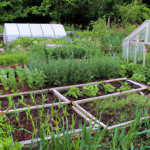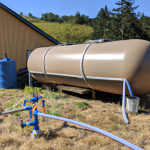Emergency Preparedness Checklist
When disaster strikes, being prepared can mean the difference between life and death. Without proper planning and supplies, you and your loved ones may be left vulnerable and unable to cope with the challenges that arise. That’s why it is essential to have a comprehensive emergency preparedness plan in place. This article provides a checklist and guide to help you navigate the often-overwhelming task of preparing for an emergency.
1. Create an Emergency Communication Plan
In times of crisis, communication is crucial. Develop a plan that outlines how you and your family will stay connected and informed during an emergency. Include important contact numbers, meeting points, and alternate modes of communication.
2. Assemble a Go Bag
A go bag is a portable kit that contains essential items to sustain you and your family for at least 72 hours. Some items to include are:
- Non-perishable food items
- Bottled water
- First aid supplies
- Flashlight and extra batteries
- Emergency blanket
- Extra set of clothing
- Cash and important documents
3. Stock Up on Food and Water
In a disaster, grocery store shelves may be empty or inaccessible. It is crucial to have an ample supply of non-perishable food items and clean drinking water at home. Aim for a two-week supply for each person in your household.
4. Prepare a First Aid Kit
A well-stocked first aid kit is a must-have for any emergency preparedness plan. It should include bandages, gauze pads, adhesive tape, antiseptic wipes, tweezers, and any prescription medications you or your family members may need.
5. Learn Basic First Aid and CPR
Knowing how to administer basic first aid and perform CPR can save lives in an emergency. Consider taking a certified first aid and CPR course to equip yourself with the necessary skills and knowledge.
6. Secure Your Home
Take steps to make your home more disaster-resistant. Secure heavy items that could become projectiles during an earthquake or strong winds. Install smoke alarms and carbon monoxide detectors, and learn how to shut off utilities such as gas and water.
7. Back up Important Documents
Make digital copies of important documents such as identification papers, insurance policies, and financial records. Store them securely online or on a portable hard drive. This ensures you can access them even if the originals are lost or damaged.
8. Stay Informed
During an emergency, accurate and up-to-date information is essential. Stay informed by monitoring local news outlets, signing up for emergency alerts, and following relevant social media accounts. Make sure you have a battery-powered radio to receive information in case of power outages.
9. Build a Community Support Network
Connect with your neighbors and establish a support network. Working together can make a significant difference during times of crisis. Share emergency plans and resources, and support one another in preparing for and recovering from disasters.
10. Practice Your Plan
Once you have your emergency preparedness plan in place, practice it regularly with your family. Conduct drills, test your communication devices, and update your supplies as needed. Being familiar with your plan will help reduce panic and increase your chances of surviving a disaster.
Remember, emergencies can happen at any time, and being prepared is essential. By following this comprehensive checklist and guide, you can ensure that you and your loved ones are ready to face any crisis that may come your way.




GIPHY App Key not set. Please check settings